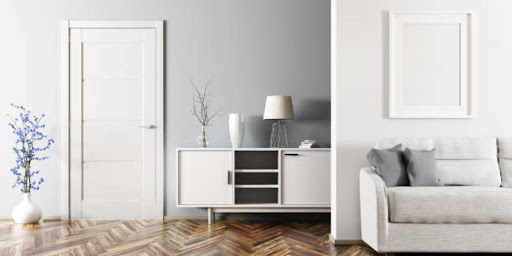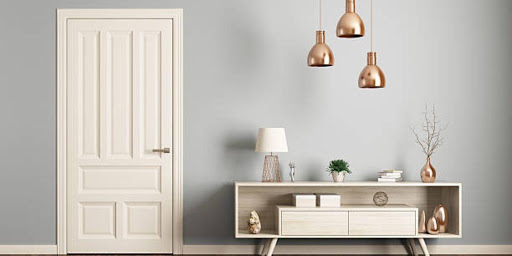Power Articles
Industry Elevating Content
The Role of Doors in Universal Design - Making Spaces Accessible – Insights for Installation Professionals

PowerArticles
Sept. 25th, 2023
In the world of construction and design, doors are not just mere portals; they are pivotal elements that can either facilitate or impede accessibility for everyone. This article aims to shed light on “The Role of Doors in Universal Design” and provide essential insights for installation professionals, especially those in the business of installing windows and doors. Universal design is about creating spaces that are inclusive, welcoming, and functional for people of all abilities, regardless of age or physical condition. By understanding the significance of doors in this context and adopting best practices for their installation, companies can contribute to making our built environments more accessible, safer, and accommodating to a diverse range of individuals.
Understanding Universal Design
Universal Design is a concept that aims to create products and environments that are accessible and usable by people of all ages, abilities, and backgrounds. It emphasizes inclusivity, ensuring that everyone, regardless of physical or cognitive limitations, can comfortably and independently navigate spaces. For window and door installation professionals, understanding the principles of Universal Design is essential.
Universal Design principles include:
- Equitable Use: Doors should be easy to open for individuals with varying levels of strength and mobility. Consider lever-style handles instead of knobs, which are easier to grasp.
- Flexibility in Use: Design doors that can accommodate different user preferences and abilities. This could involve adjustable thresholds and wide entrances for wheelchair access.
- Simple and Intuitive Use: Ensure doors are easy to operate without the need for complex instructions. Clear signage and intuitive handles aid in this aspect.
- Perceptible Information: Use materials and designs that are understandable by a wide range of users, including those with visual or cognitive impairments. Contrasting colors, tactile surfaces, and clear markings are examples.
- Tolerance for Error: Design doors and windows with features that minimize the consequences of accidents or mistakes. For example, doors with sensors that prevent them from closing on someone in the way.
Benefits of Universal Design for All Users
Universal Design isn’t just about meeting accessibility standards; it enhances the quality of life for everyone. For installation professionals, this means creating products that are:
- Convenient: Easier-to-use doors and windows benefit everyone, from parents with strollers to individuals carrying heavy items.
- Safe: Well-designed doors reduce tripping hazards and improve security, benefiting everyone in the space.
- Future-Proof: As people age or their needs change, Universal Design features ensure spaces remain usable without costly renovations.
Legal and Ethical Considerations
Compliance with accessibility standards is not just a legal requirement in many places; it’s also an ethical responsibility. Discrimination in access to public spaces can lead to legal trouble and damage a company’s reputation. Being knowledgeable about Universal Design principles and implementing them in your installation work ensures compliance and shows a commitment to inclusivity and social responsibility. Companies that prioritize Universal Design gain a competitive edge and contribute to creating more accessible, equitable, and welcoming spaces for everyone.

Doors as Key Elements in Universal Design
Doors play a pivotal role in the realm of Universal Design, especially when it comes to making spaces accessible to all individuals, regardless of their abilities or disabilities. Installation professionals working with windows and doors should be well-versed in the importance of doors in Universal Design. In this article, we will explore the functionality of doors, common door-related accessibility challenges, types of doors in Universal Design, and key considerations for installing accessible doors.
The Functionality of Doors
Doors are more than just physical barriers; they are portals to the world, facilitating movement and access within spaces. In Universal Design, doors are expected to serve a dual purpose: they must offer security and privacy while also ensuring easy and barrier-free passage for everyone. This dual functionality forms the foundation of Universal Design, aiming to create spaces that are inclusive and accommodating for all individuals.
Common Door-Related Accessibility Challenges
Narrow Doorways:
One of the most common accessibility challenges is narrow doorways. These can be problematic for people who use wheelchairs, walkers, or have other mobility aids. Universal Design strives to address this issue by ensuring that doorways are wide enough to accommodate wheelchairs and other mobility devices comfortably.
High Thresholds:
High thresholds or uneven transitions at doorways can pose a significant obstacle, particularly for individuals with mobility impairments. Universal Design emphasizes the importance of eliminating high thresholds, providing a smooth and level transition between indoor and outdoor spaces.
Heavy Doors:
Heavy doors can be difficult to open, especially for people with limited upper body strength or those using mobility aids. Universal Design suggests the use of lightweight or automated doors to reduce physical exertion and make entry and exit smoother for everyone.
Types of Doors in Universal Design
Universal Design recognizes various types of doors that can be used to enhance accessibility:
- Swing Doors: Swing doors are the most common type of door and are often used in homes, offices, and public buildings. When designing for accessibility, it’s crucial to ensure that swing doors have sufficient clearance space for wheelchairs and walkers to pass through comfortably.
- Sliding Doors: Sliding doors are an excellent choice for spaces with limited clearance for swing doors. They are particularly useful in tight spaces and can be automated for ease of use.
- Revolving Doors: While revolving doors are aesthetically pleasing and can help with climate control, they can be challenging for individuals with mobility impairments. Universal Design recommends providing an adjacent accessible entrance for those who cannot use revolving doors.
Key Considerations for Installing Accessible Doors
- Door Width and Clearance: Universal Design dictates that doors should have a minimum width of 32 inches to accommodate wheelchairs. Additionally, a clear passage space of at least 36 inches should be maintained to ensure easy maneuverability.
- Thresholds and Ramps: Thresholds should be minimal and flush with the floor to prevent tripping hazards. Ramps should be provided where necessary to ensure smooth transitions.
- Door Hardware and Handles: Door hardware should be easy to grasp and operate, requiring minimal effort. Lever-style handles are often preferred over doorknobs, as they are easier to use for individuals with limited hand strength.
- Automatic Door Openers: Installing automatic door openers can greatly enhance accessibility, allowing individuals with disabilities to enter and exit spaces independently.
5. Clear Signage: Proper signage is crucial to guide individuals to accessible entrances and exits. Signage should include Braille and tactile elements for those with visual impairments.

Installation Best Practices for Universal Design
For installation professionals, adhering to best practices in universal design is essential to make spaces accessible for all. Here are the key installation best practices to consider:
A. Pre-Installation Assessment
- Site Survey: Before installation begins, conduct a thorough site survey. Identify potential obstacles, such as uneven terrain or narrow passageways. This assessment helps you plan for accessible routes and choose the right door types.
- Compliance with Building Codes and Regulations: Familiarize yourself with local building codes and accessibility regulations. Ensure your installations meet these standards, as they are designed to make spaces universally accessible.
B. Selecting Appropriate Door Types and Materials
Choose doors and materials that align with universal design principles. Opt for wider door frames to accommodate wheelchairs and walkers. Consider automatic doors with accessible handles, and select materials that are durable and easy to maintain.
C. Proper Sizing and Placement
Correctly sizing and placing doors is critical. Install doors with adequate width to allow for easy passage, typically a minimum of 36 inches wide. Place them at accessible heights, with handles and locks within reach for people of varying abilities.
D. Addressing Accessibility Challenges
Identify potential challenges, such as thresholds or stairs. Install ramps or lifts where necessary to eliminate barriers. Ensure that door swings are clear, providing unobstructed access.
E. Installation Techniques for Universal Access
Adopt installation techniques that prioritize universal access. Ensure doors open and close smoothly, without excessive force. Adjust hinges and hardware for ease of use. Additionally, use contrasting colors for door frames and handles to assist those with visual impairments.
F. Testing and Quality Assurance
Before completing an installation, thoroughly test doors and their components. Check for smooth operation, proper alignment, and secure anchoring. Conduct quality assurance checks to verify that the installation adheres to universal design principles.

Conclusion
In conclusion, recognizing the pivotal role of doors in universal design is essential for installation professionals working with windows and doors. By understanding the principles of accessibility and inclusivity, they can contribute to creating spaces that accommodate the needs of all individuals, regardless of their physical abilities. Ensuring that doors are wide enough, easy to open, and equipped with appropriate hardware can make a significant difference in the lives of people with disabilities. Ultimately, embracing universal design not only enhances the functionality of spaces but also promotes inclusivity and equal access for everyone, aligning with the broader goal of creating a more inclusive and welcoming built environment for all.
Published By
PowerArticles
Sept. 25th, 2023